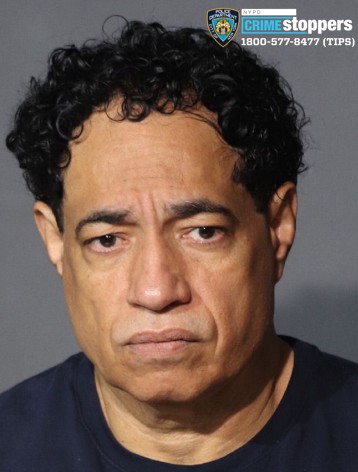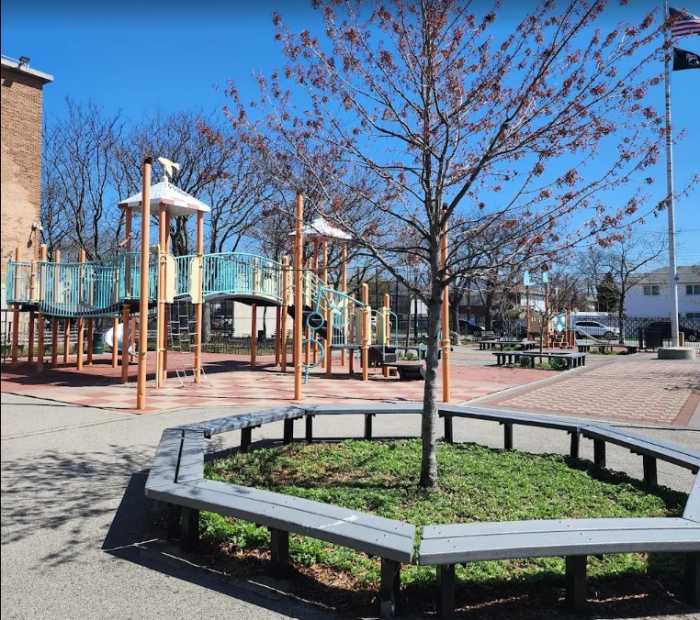By Helen Klein
As Brooklyn’s population rises, the number of parking spots continues to drop. This is, in part, because local residents – whether they are legally entitled to one or not – have increasingly taken a do-it-yourself approach to creating curb cuts. The result, across the borough, is a plethora of parking pads shoehorned onto properties, accessed by curb cuts that may or may not have been granted permits but which, once they are in existence, are nearly impossible to remove. It is to stem the tide of illegal curb cuts, and create a mechanism to remove those that have been improperly created, that City Councilmember Vincent Gentile authored two bills now being considered by the City Council. Also being considered is a bill proposed by Manhattan Councilmember Gale Brewer. One of Gentile’s bills, Intro 213, would require surveys of all existing curb cuts by the city, as well as notification to the appropriate community board of curb cut applications that are received. A second, Intro 620, would create a process for restoring illegal curb cuts. The Brewer bill, Intro 639, would mandate review of curb cut applications by the appropriate community board as well as the Department of Transportation (DOT). A third Gentile bill, Intro 217, does not tackle private curb cuts but rather those that the city installs. This would require that mid-block pedestrian ramps be clearly marked – to warn motorists not to block them. Gentile, speaking at a hearing on the bills, held late last month by the City Council’s Transportation Committee, said that, in his view, “An illegal curb cut removes a legal spot at the expense of an entire block….Illegally created driveway curb cuts are not only an act of pure selfishness to maintain a private parking space, but it also undermines the integrity of our blocks and the benefits achieved through our rezonings.” Gentile also pointed out that there has been “rampant abuse of self-certification in relation to curb cuts.” For this reason, he said, one of his bills, “Call for increased transparency, achieved through notification to the local community board whenever an application for a curb cut is sought.” As far as the marking of mid-block pedestrian ramps is concerned, Gentile said he had authored the legislation as a way of stemming overzealous enforcement. “The bill,” he said, “was first addressed when a blitz of summonses were given out for blocking non-existent, unmarked crosswalks. The fine for blocking the crosswalk is a steep $165, the second highest non-moving violation and to add insult to injury, people were receiving this fine for blocking ‘phantom crosswalks.’ To me, this is nothing more than entrapment.” DOT, Gentile added, had told him it had a policy of only marking crosswalks at “controlled intersections. I concede this point but still seek a solution to this practice of unfair ticketing. Most of the people who have received this summons committed this infraction entirely unbeknownst to them, because, without he crosswalk, many just do not see the curb cut when parking.” Overall, testimony was generally supportive of the efforts. Josephine Beckmann, the district manager of Community Board 10, speaking on the board’s behalf, told councilmembers during the committee hearing that, “The installation of illegal curb cuts is a significant problem in Community District 10. “Illegal curb cuts diminish the number of on-street public parking spaces,” Beckmann went on. “Illegal curb cuts have also altered the residential landscape of many pristine tree-lined one and two family row house blocks because front gardens are removed and replaced with cement paved car ports.” Joanne Seminara, the chairperson of CB 10’s Zoning Committee, and Democratic district leader in the 60th A.D., also testified on behalf of the legislation. “It’s high time,” she noted in a subsequent interview, “that we recognize the problem and how much it contributes to the quality of life.” The proliferation of curb cuts, she said, not only adds to the shortage of parking spots, but, “Undermines the work we’ve done to keep the quality of our blocks in terms of aesthetics.” In particular, said Seminara, it is important to note that the effect of multiple curb cuts is “cumulative.” This, she stressed, is why, “It’s important that the legislation have a discretionary component.” This aspect, she added, is fulfilled by allowing the community board to have a say in whether curb cut requests should be granted. Peter Killen, the executive director of the Bay Ridge Consumer Federation, testified on behalf of marking mid-block pedestrian ramps, and urged the council to amend the legislation to require “marking lines” to draw attention to pedestrian ramps. Calling the situation, “A city-wide plague that not only affects the people of Bay Ridge, Dyker Heights and Fort Hamilton, but all of New York City,” Killen said it is the federation’s belief, “That the driving public understands that they are not allowed to park and block a pedestrian ramp but these pedestrian ramps are not only the exceptions, they are accidents waiting to happen.” Why? Explained Killen, “They are unmarked, placed in the middle of blocks where pedestrian ramps are not expected to be and where persons would most likely not cross the street because there a re no traffic lights or stop signs, making it unsafe for a pedestrian to cross at that location.” Ralph Perfetto, Democratic district leader of the 60th A.D., also testified in favor of marking the pedestrian ramps. He recalled that his wife, Phyllis O’Neil Perfetto, had, “Come up with the idea and made the proposal about designating pedestrian crosswalks in mid block back in 2005, because people didn’t know there were there, and they were parking. This was hurting the disabled and also costing them a $165 fine.” However, David Woloch, deputy commissioner of DOT, had a different take on the legislation. With respect to the marking of unmarked pedestrian ramps, Woloch said that the agency had a alternative solution. “Instead of installing signs, which would prohibit parking at these mid-block ramps,” he told the committee, “we’ll be modifying our traffic rules to clarify that parking at these uncontrolled mid-block ramps is in fact legal.” In addition, said Woloch, “We have begun marking crossings a certain T intersections with crosswalks, in locations adjacent to land use that generates substantial pedestrian activity where the closest controlled intersection is beyond 500 feet. By doing this, we open more viable parking spots to motorists on the one hand, and clarify these are locations that should not be crossed, but will allocate safe space for pedestrian crossings where it is needed.” As to the bills that were proposed with respect to driveway curb cuts, Woloch opined that the Brewer bill, “Would expand the universe of applications DOT reviews unnecessarily…. Further, it is just not possible to conduct a comprehensive review in the time frame allotted in the bill.” As for Intros 213 and 620, Woloch said that they would create excessive burdens, both in terms of time frame and in terms of allocation of resources. “From DOT’s perspective, our greatest concern is that this work will take away from our existing sidewalk work, which is of a greater priority in respect to safety,” he told his listeners. Stephen Kramer, senior counsel at DOB, testified with respect to Intro 213, which he contended would increase the burden on the department to the point that it would take away from other activities. For one thing, he said, the legality of an existing curb cut does not rest solely on current law; if it was installed legally under prior law that is no longer in effect, it is still legal, making researching the legality of every curb cut in the city a major endeavor. Beyond legality, Kramer noted, that with 6,000 miles of streets in New York, “and thus over 12,000 miles of curbs,” the effort required by the intro, “Would be a significant agency enterprise, potentially moving resources away from core agency functions of insuring safety and compliant buildings.




































